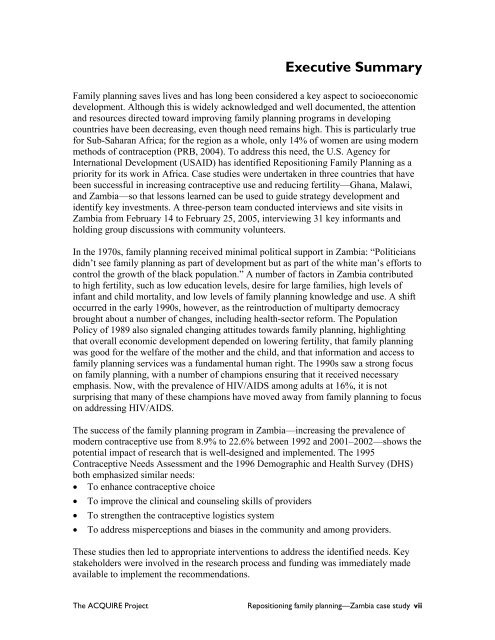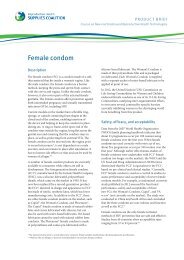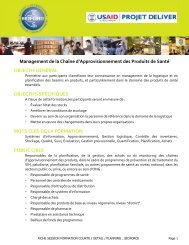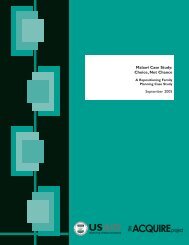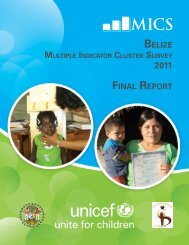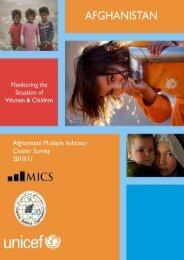Zambia Case Study: Ready for Change - Reproductive Health ...
Zambia Case Study: Ready for Change - Reproductive Health ...
Zambia Case Study: Ready for Change - Reproductive Health ...
Create successful ePaper yourself
Turn your PDF publications into a flip-book with our unique Google optimized e-Paper software.
Executive Summary<br />
Family planning saves lives and has long been considered a key aspect to socioeconomic<br />
development. Although this is widely acknowledged and well documented, the attention<br />
and resources directed toward improving family planning programs in developing<br />
countries have been decreasing, even though need remains high. This is particularly true<br />
<strong>for</strong> Sub-Saharan Africa; <strong>for</strong> the region as a whole, only 14% of women are using modern<br />
methods of contraception (PRB, 2004). To address this need, the U.S. Agency <strong>for</strong><br />
International Development (USAID) has identified Repositioning Family Planning as a<br />
priority <strong>for</strong> its work in Africa. <strong>Case</strong> studies were undertaken in three countries that have<br />
been successful in increasing contraceptive use and reducing fertility—Ghana, Malawi,<br />
and <strong>Zambia</strong>—so that lessons learned can be used to guide strategy development and<br />
identify key investments. A three-person team conducted interviews and site visits in<br />
<strong>Zambia</strong> from February 14 to February 25, 2005, interviewing 31 key in<strong>for</strong>mants and<br />
holding group discussions with community volunteers.<br />
In the 1970s, family planning received minimal political support in <strong>Zambia</strong>: “Politicians<br />
didn’t see family planning as part of development but as part of the white man’s ef<strong>for</strong>ts to<br />
control the growth of the black population.” A number of factors in <strong>Zambia</strong> contributed<br />
to high fertility, such as low education levels, desire <strong>for</strong> large families, high levels of<br />
infant and child mortality, and low levels of family planning knowledge and use. A shift<br />
occurred in the early 1990s, however, as the reintroduction of multiparty democracy<br />
brought about a number of changes, including health-sector re<strong>for</strong>m. The Population<br />
Policy of 1989 also signaled changing attitudes towards family planning, highlighting<br />
that overall economic development depended on lowering fertility, that family planning<br />
was good <strong>for</strong> the welfare of the mother and the child, and that in<strong>for</strong>mation and access to<br />
family planning services was a fundamental human right. The 1990s saw a strong focus<br />
on family planning, with a number of champions ensuring that it received necessary<br />
emphasis. Now, with the prevalence of HIV/AIDS among adults at 16%, it is not<br />
surprising that many of these champions have moved away from family planning to focus<br />
on addressing HIV/AIDS.<br />
The success of the family planning program in <strong>Zambia</strong>—increasing the prevalence of<br />
modern contraceptive use from 8.9% to 22.6% between 1992 and 2001–2002—shows the<br />
potential impact of research that is well-designed and implemented. The 1995<br />
Contraceptive Needs Assessment and the 1996 Demographic and <strong>Health</strong> Survey (DHS)<br />
both emphasized similar needs:<br />
• To enhance contraceptive choice<br />
• To improve the clinical and counseling skills of providers<br />
• To strengthen the contraceptive logistics system<br />
• To address misperceptions and biases in the community and among providers.<br />
These studies then led to appropriate interventions to address the identified needs. Key<br />
stakeholders were involved in the research process and funding was immediately made<br />
available to implement the recommendations.<br />
The ACQUIRE Project<br />
Repositioning family planning—<strong>Zambia</strong> case study vii


